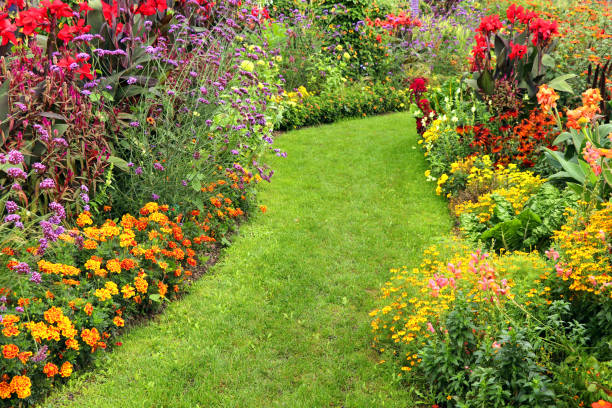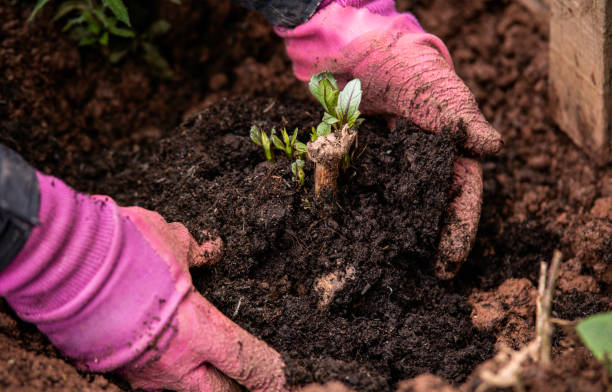Dahlias, with their riotous colors and varied shapes, stand as a testament to the diversity and splendor of the plant kingdom, captivating gardeners and floral enthusiasts alike. Yet, amidst their undeniable beauty, a common question arises: Are dahlias perennials? This seemingly simple inquiry opens the door to a nuanced exploration of the dahlia’s lifecycle, adaptability, and the role gardeners play in extending their bloom from season to season.
In this article, “Are Dahlias Perennials?” we dive deep into the heart of the dahlia’s botanical classification, unraveling the mysteries of its growth habits and how they can vary dramatically depending on climatic conditions. With a foundation rooted in horticultural science and hands-on gardening experience, our exploration is designed to not only answer the perennial question but also to enrich your understanding of dahlias and how to cultivate them successfully in your own garden.
Whether you’re a seasoned dahlia grower or a novice eager to introduce these stunning flowers into your landscape, this article promises to shed light on the perennial nature of dahlias, offering practical advice and insights that highlight the resilience and beauty of these beloved blooms. Join us as we navigate the complexities of dahlia gardening, providing you with the knowledge to make informed decisions that will ensure your dahlias thrive, year after year. Let your curiosity bloom as we delve into the perennial question that shapes the world of dahlias.
Understanding Dahlias
Dahlias Demystified: Annuals or Perennials?
One of the first questions that often arises when discussing dahlias is whether they are annuals or perennials. Well, the answer is both. Dahlias belong to the Asteraceae family and are native to the mountainous regions of Mexico and Central America. Botanically speaking, dahlias are perennial plants, meaning they have the potential to live for multiple years. However, their ability to survive the winter and return year after year depends on various factors, including the climate in which they are grown.
The Fascinating History of Dahlias
Dahlias have a rich and captivating history that spans centuries. These stunning flowers were first discovered by European explorers in the 16th century during their journeys to the New World. The plants were named after the Swedish botanist Anders Dahl, who classified them in the late 18th century. Since then, dahlias have undergone extensive breeding and hybridization, resulting in the wide array of colors, sizes, and forms we see today. From their humble beginnings in Mexico to their popularity in modern gardens worldwide, dahlias have truly made an incredible journey.
Planting and Care
Selecting the Right Varieties for Your Garden
When it comes to choosing dahlia varieties for your garden, the options are nearly endless. Dahlias come in various colors, ranging from vibrant reds and oranges to soft pastels and pure whites. They also vary in size, with some producing delicate blooms while others boast large, showy flowers. Additionally, bloom time is an important consideration, as it determines when your dahlias will be in full glory. By selecting a diverse range of varieties, you can enjoy dahlias blooming throughout the growing season.
The Art of Planting Dahlia Tubers
Planting dahlia tubers is a rewarding experience that requires a few key steps. First, choose a well-draining location in your garden that receives ample sunlight. Next, prepare the soil by incorporating organic matter and ensuring it is loose and friable. Dig a hole that is deep enough to accommodate the tuber and place it with the eye facing upward. Gently cover the tuber with soil, leaving a small mound to prevent water pooling. With proper timing and spacing, you’ll set the stage for your dahlias to flourish.
Mastering Dahlia Care: Watering, Feeding, and Sun Requirements
To ensure your dahlias thrive, it’s essential to provide them with proper care. Adequate watering is crucial, especially during hot and dry periods. Keep the soil consistently moist but not waterlogged to prevent rot. Regular feeding with a balanced fertilizer will supply the necessary nutrients for healthy growth and abundant blooms. Moreover, dahlias are sun-loving plants, so be sure to plant them in a location that receives at least six hours of direct sunlight each day.
Advanced Dahlia Gardening

Staking and Supporting Your Dahlias
As dahlias grow taller and produce heavy blooms, they may require additional support to prevent bending or breaking. Staking is a common technique used to keep dahlias upright and maintain their aesthetics. There are several methods for staking, including using bamboo stakes, metal cages, or trellises. By providing proper support, you can enjoy your dahlias’ beauty without worrying about damage caused by wind or heavy rains.
Seasonal Care Strategies
Dahlias require different care strategies as the seasons change. During the spring, focus on nurturing your dahlias and ensuring they establish strong root systems. In the summer, continue to provide regular watering and monitor for pests and diseases. As fall approaches, prepare your dahlias for overwintering by reducing watering and allowing the foliage to naturally wither. By adapting your care routine to each season, you’ll help your dahlias thrive year after year.
Overwintering and Propagation
Overwintering Dahlias: A Comprehensive Guide
Overwintering dahlias is essential in colder climates where the tubers may not survive freezing temperatures. To protect your dahlias, carefully lift the tubers from the ground after the first frost. Clean the tubers, allow them to dry, and store them in a cool, dark place for the winter. Inspecting the tubers periodically and discarding any damaged or rotting ones will help ensure their viability. Comespring, you can replant the tubers and eagerly await the return of your dahlias.
Dividing and Propagating Dahlias for a Blooming Future
If you want to expand your dahlia collection or share the beauty of dahlias with others, dividing and propagating the tubers is an excellent method. Dividing dahlias involves carefully separating the tubers into smaller sections, making sure each division has an eye or bud. These divisions can then be replanted to grow new dahlia plants. By propagating dahlias, you can multiply your favorite varieties and create a blooming future filled with even more stunning flowers.
Troubleshooting and Maximizing Blooms
Dealing with Common Dahlia Pests and Diseases
Like any other plants, dahlias can sometimes face challenges in the form of pests and diseases. Common pests that may affect dahlias include aphids, slugs, and spider mites. By regularly inspecting your plants and taking proactive measures such as using organic pest control methods or introducing beneficial insects, you can minimize the damage caused by these pests. Additionally, being aware of common diseases like powdery mildew and crown rot will help you identify and address any issues promptly, ensuring your dahlias stay healthy and vibrant.
Techniques for Extending the Blooming Season
Wouldn’t it be wonderful to enjoy the dazzling beauty of dahlias for as long as possible? With a few simple techniques, you can extend the blooming season of your dahlias. Deadheading, which involves removing spent blooms, encourages the plant to produce more flowers. Regularly fertilizing and providing adequate water will also promote continuous blooming. Additionally, strategic planting of early, mid, and late-flowering varieties can ensure a prolonged display of dahlia blossoms in your garden.
Dahlia Inspirations
Landscaping with Dahlias: Adding Drama and Color
Dahlias are not just exquisite flowers for your garden; they can also be used to create stunning visual impact in your landscape designs. Whether you’re aiming for a vibrant and bold display or a more subtle and romantic setting, dahlias can be incorporated in various ways. Plant them as focal points in flower beds, use them to add height and structure in borders, or create eye-catching dahlia-filled containers. The possibilities are endless, and with dahlias as your companions, your landscape will be transformed into a captivating masterpiece.
Dahlias and Wildlife: Creating a Pollinator Paradise
Dahlias have an important role to play in supporting pollinators and creating a haven for wildlife in your garden. The nectar-rich flowers of dahlias attract bees, butterflies, and other beneficial insects, providing them with a valuable food source. By planting dahlias alongside other pollinator-friendly plants, you can establish a vibrant ecosystem and contribute to the conservation of these important creatures. Witnessing the dance of butterflies and the buzzing of bees around your dahlias is a true delight for any nature enthusiast.
Engaging with the Community
Join the Dahlia Community: Societies and Online Forums
Gardening is not just a solitary pursuit; it’s a wonderful opportunity to connect with like-minded individuals who share your passion. If you’re interested in dahlias, joining dahlia societies and online forums can provide you with a wealth of knowledge, advice, and camaraderie. These communities are filled with experienced growers and beginners alike, all eager to share their experiences, swap tubers, and offer support. By engaging with the dahlia community, you’ll expand your horizons and forge meaningful connections with fellow dahlia enthusiasts.
Celebrating Dahlias: Festivals and Shows
Immerse yourself in the world of dahlias by attending festivals and shows dedicated to these remarkable flowers. Dahlia festivals and exhibitions are held in various locations, showcasing stunning dahlia displays, offering educational workshops, and providing a platform to learn from experts in the field. These events are not only an opportunity to appreciate the beauty of dahlias but also a chance to celebrate the passion and dedication of the dahlia community. So mark your calendars and get ready for a truly captivating and inspiring experience.
Conclusion
Recap of the guide and final thoughts on the joy and beauty of growing dahlias. Encouragement to experiment with dahlias in the garden, embracing the community and sustainable practices.
